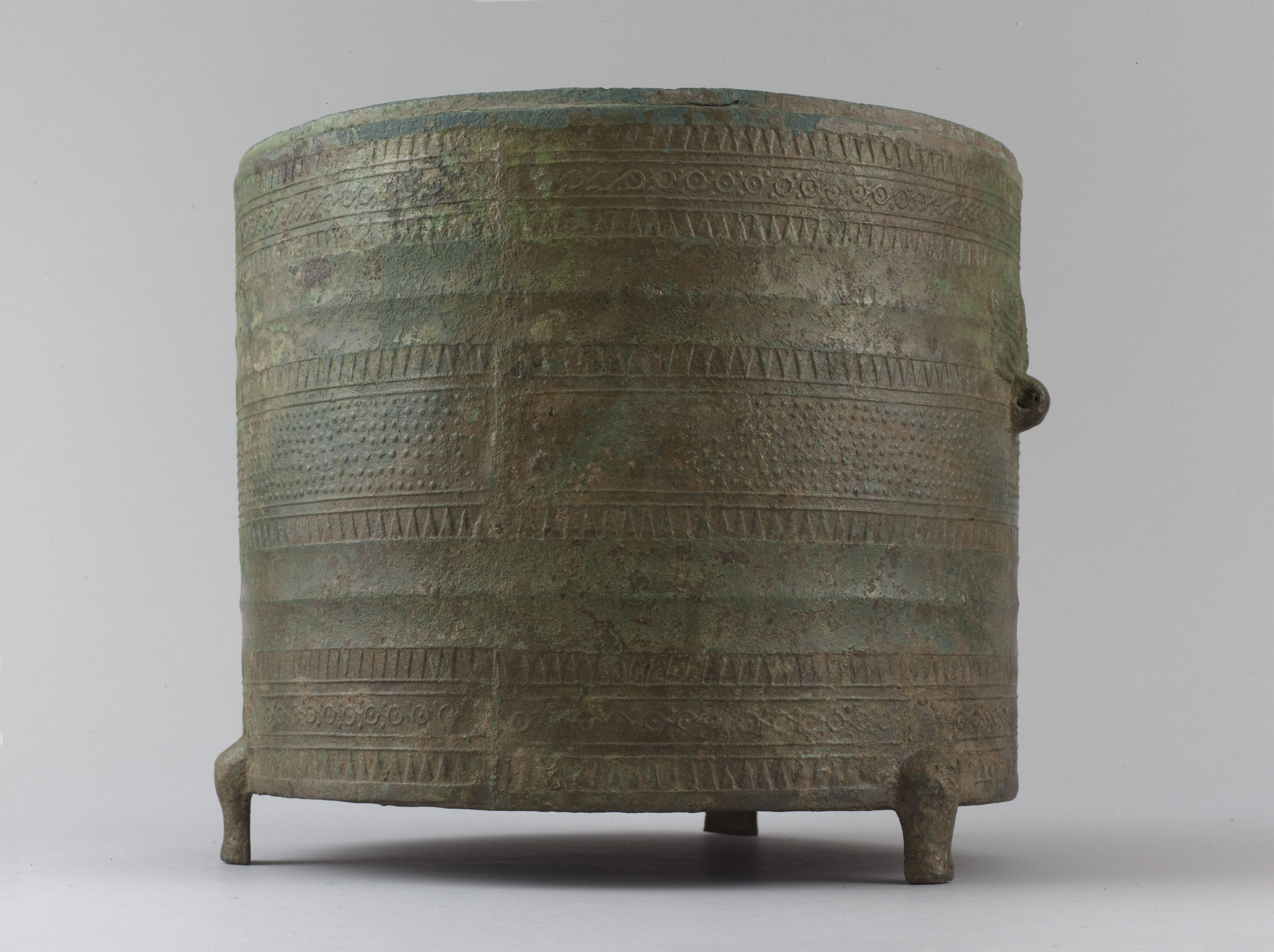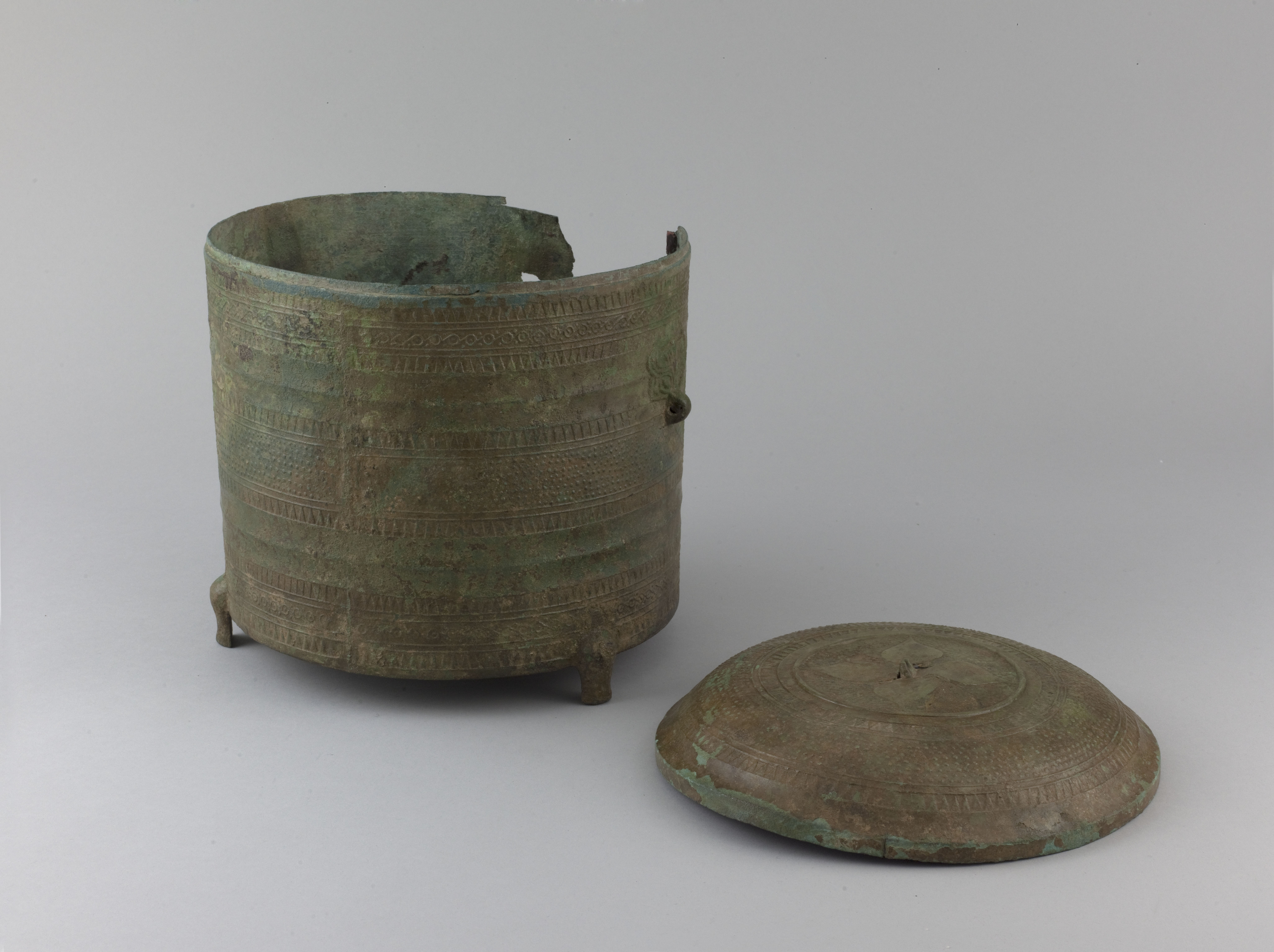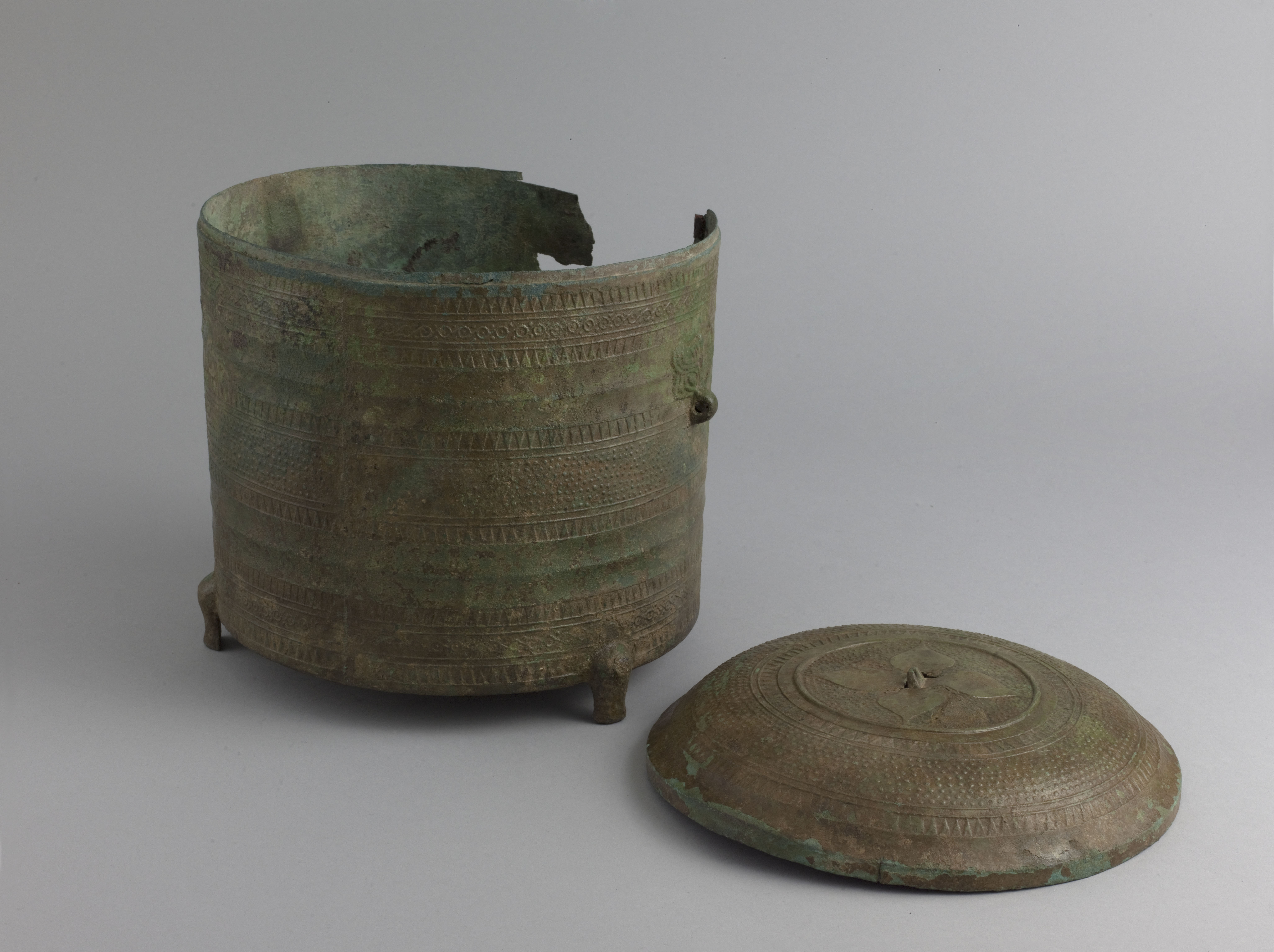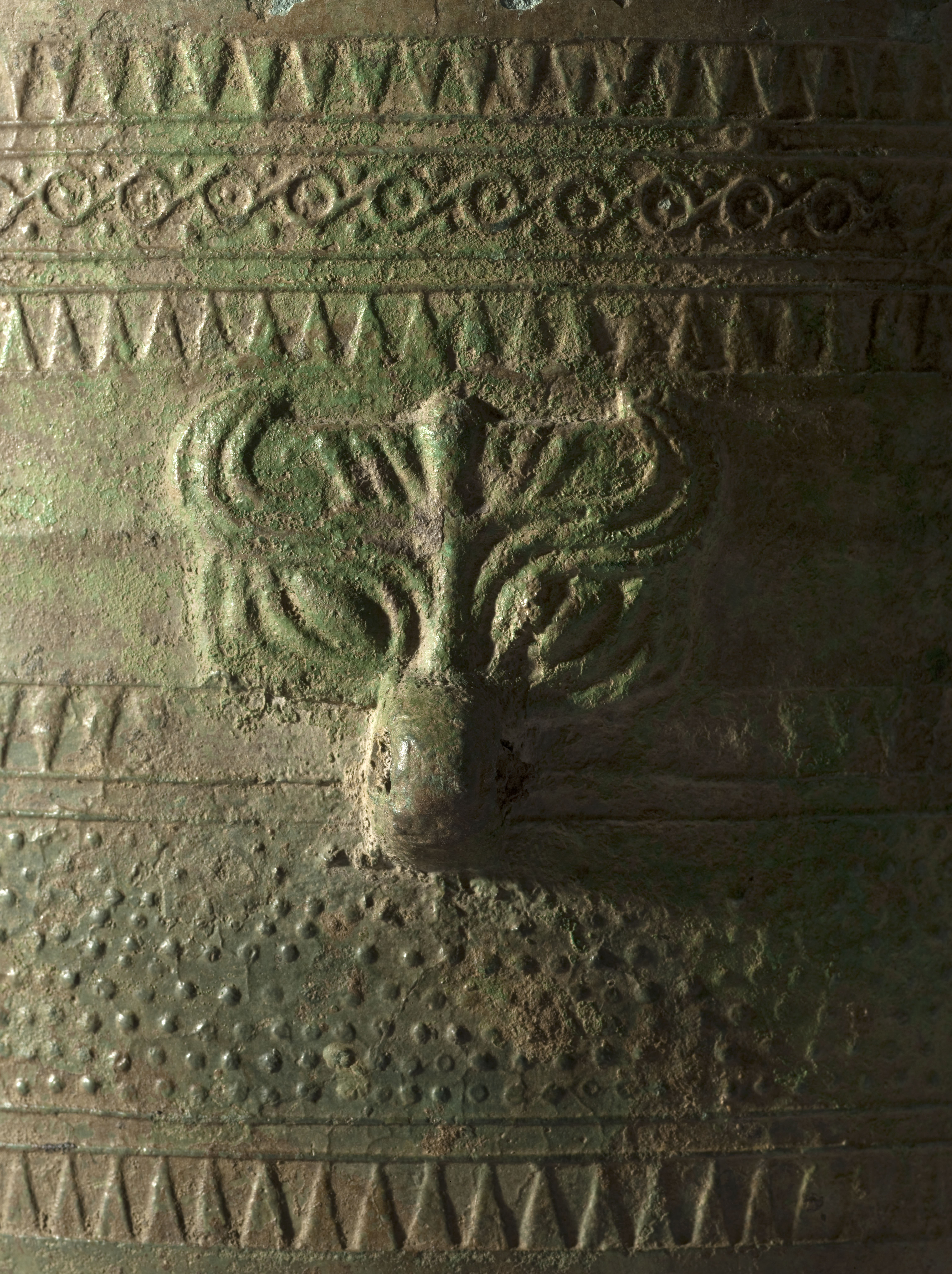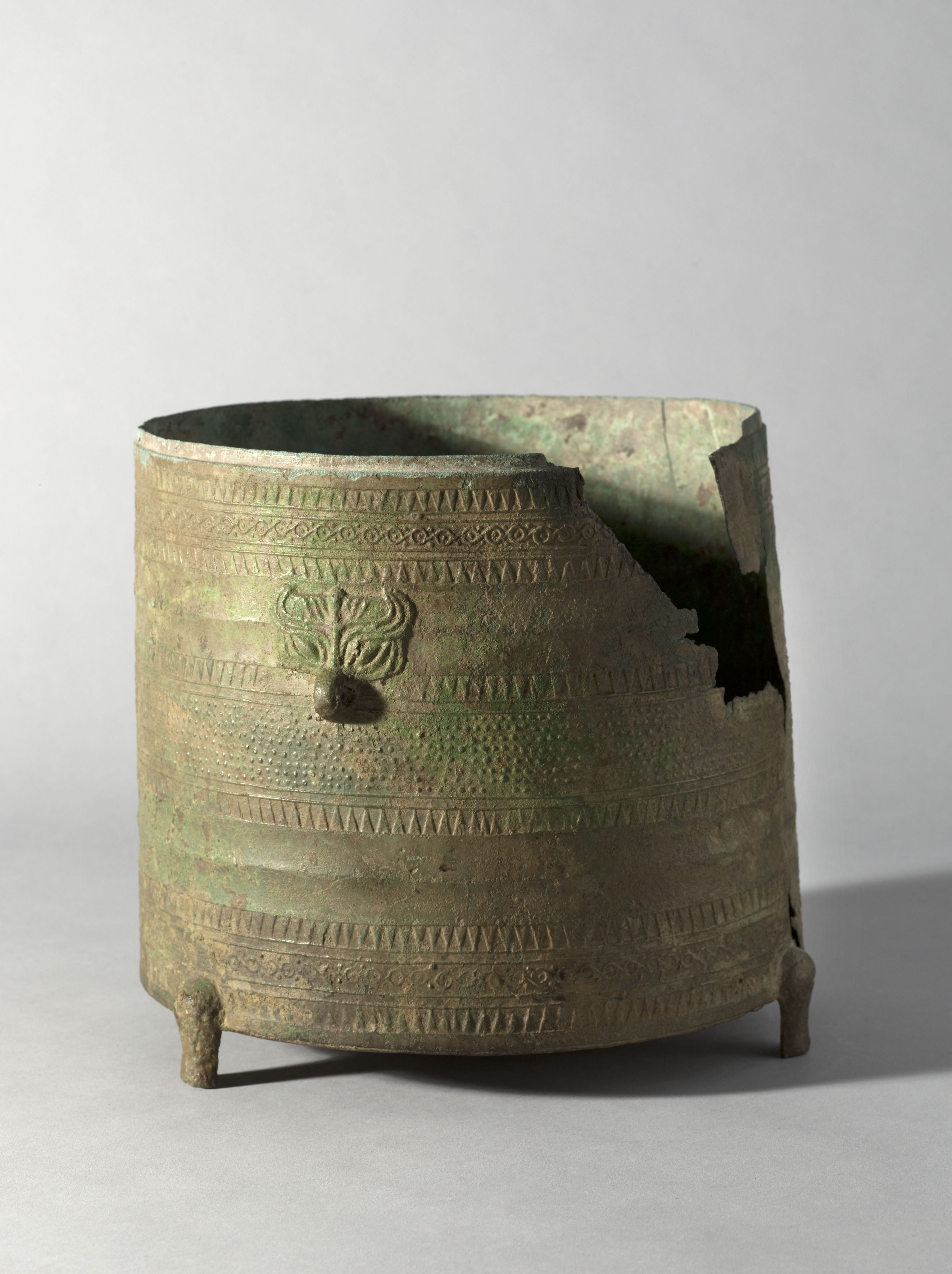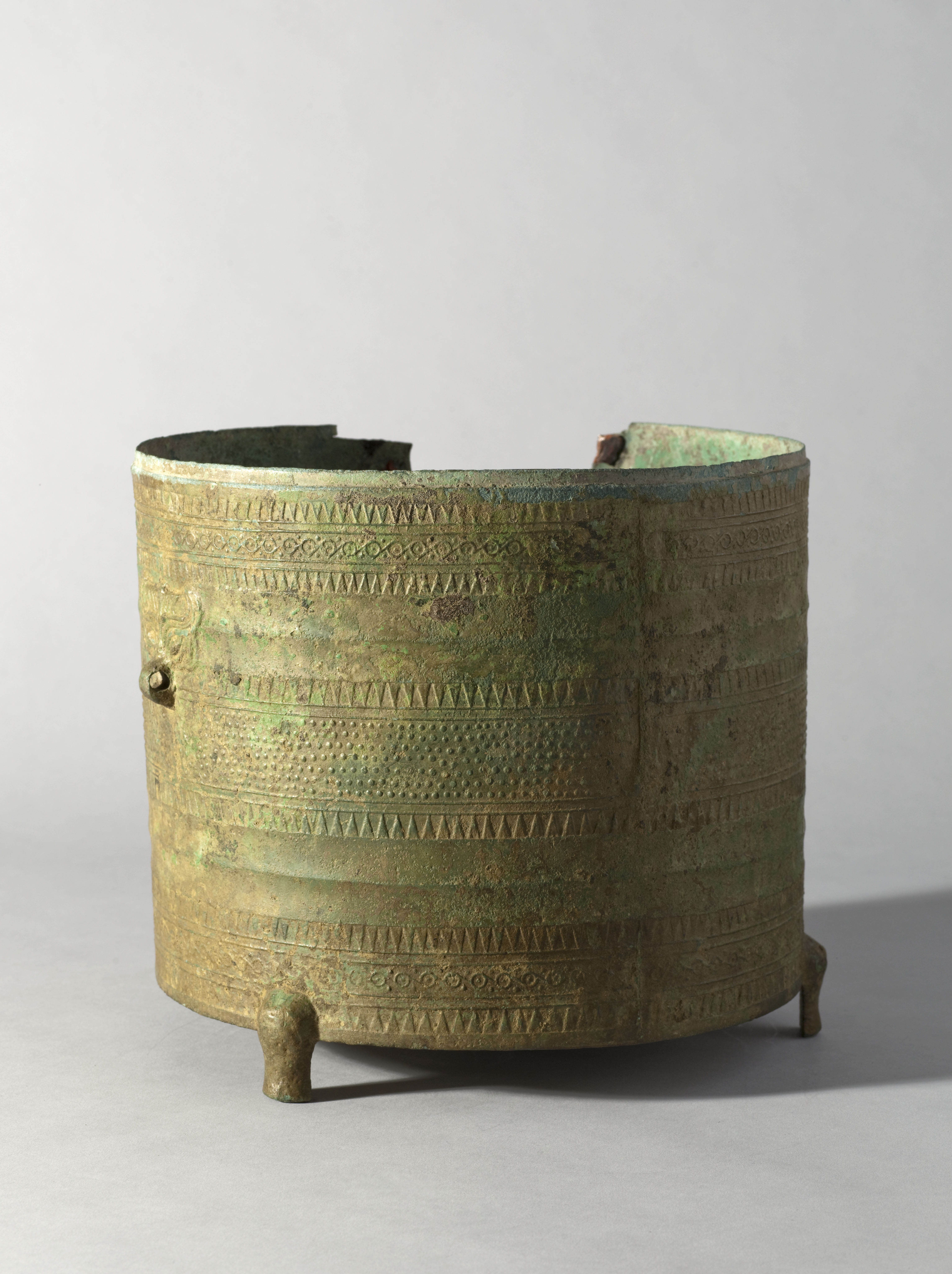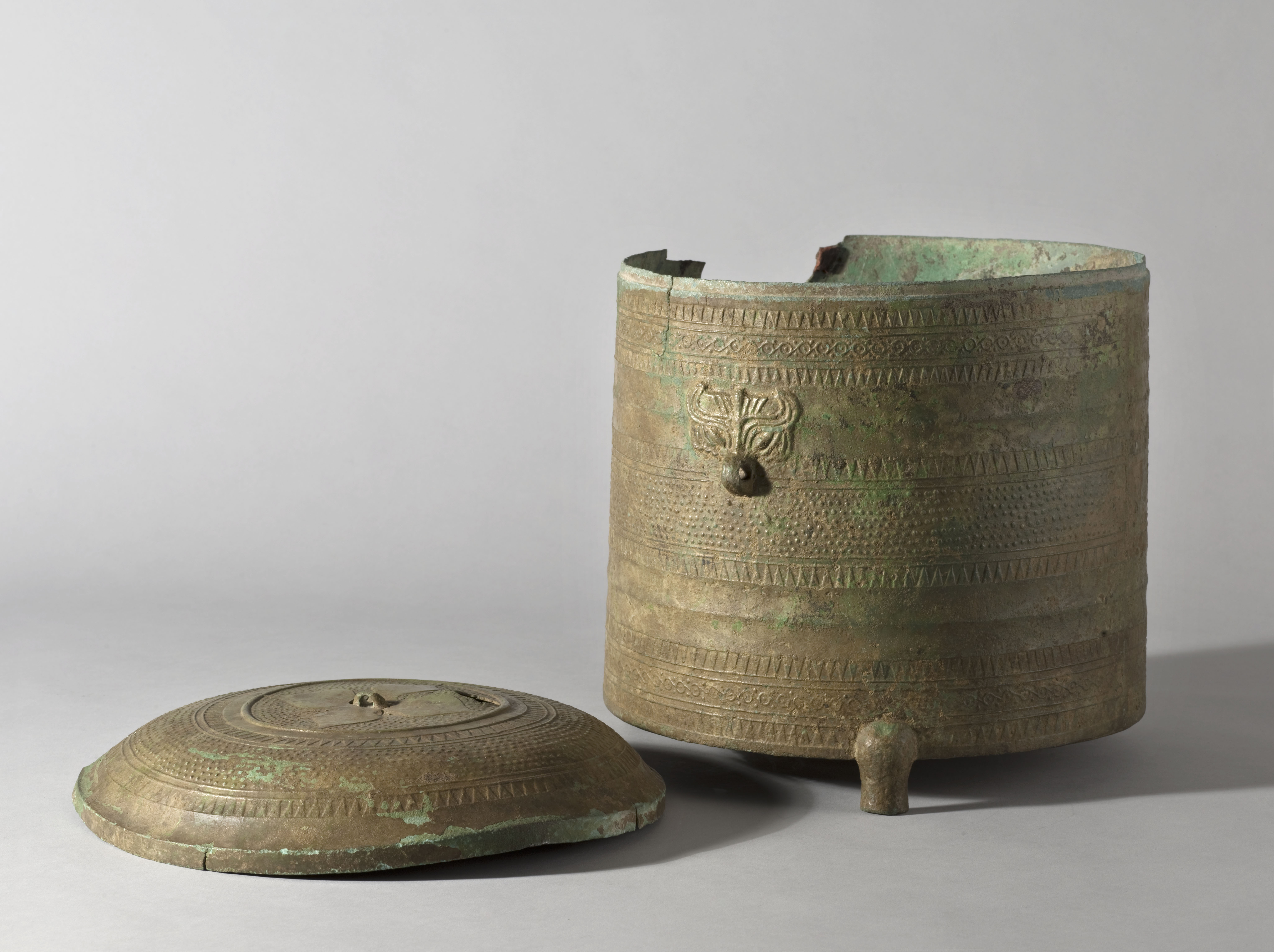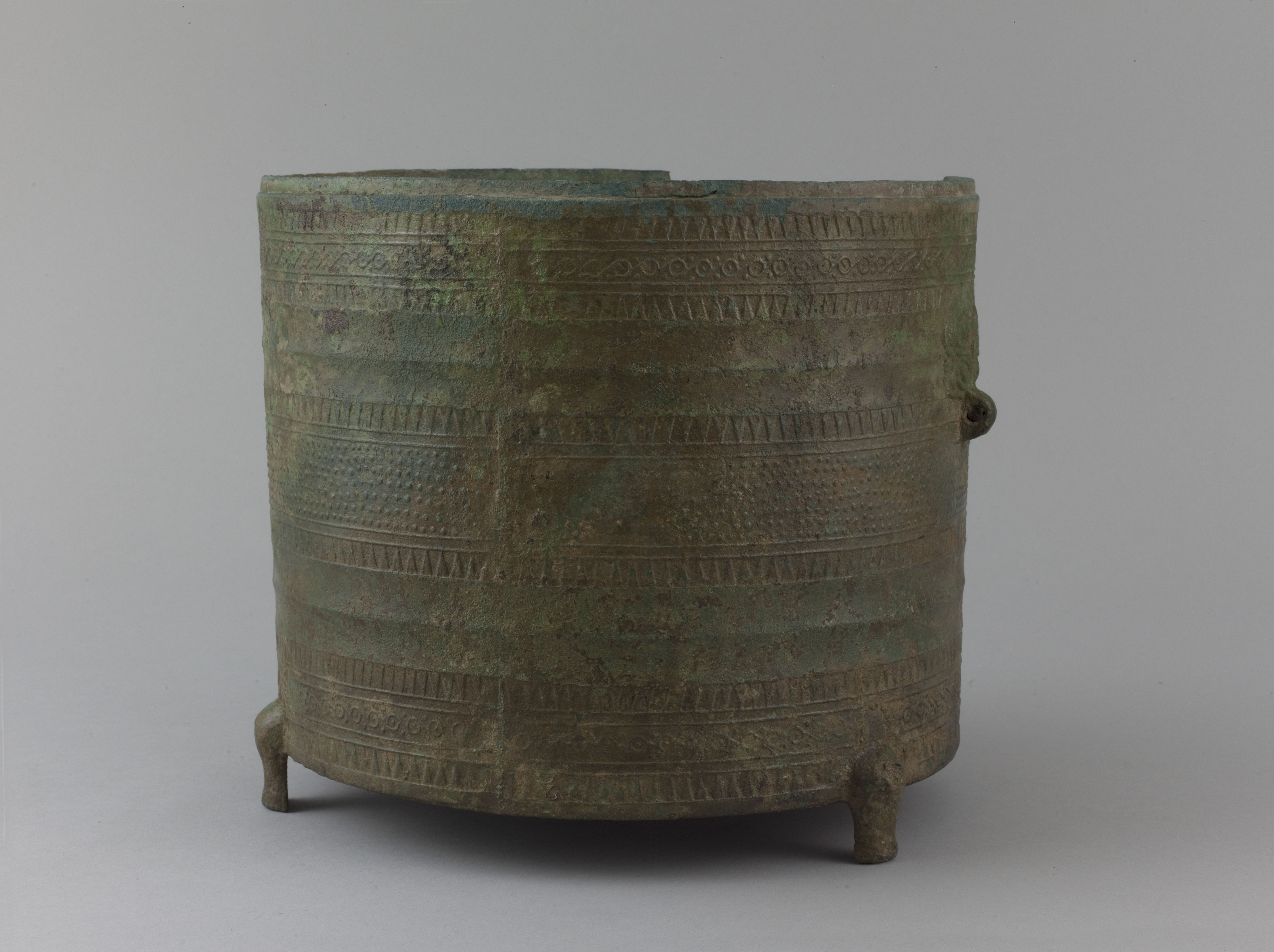
Vase tripode
Bronze
Vase
Ancienne collection Albert Pouyanne
Achat
M.C. 8761
The form of this cylindrical pot set on three small feet was brought to northern Vietnam by Chinese colonists. Objects of this type are known to have existed in China since the Warring States period, circa the 4th century BC. They were very common in the Han era, and were subsequently copied in regions where there was a strong Chinese influence.
This Cernuschi Museum bronze vessel, however, illustrates the intermingling at the time of elements directly borrowed from China and motifs from the native culture of northern Vietnam.
From China, this pot borrows its shape, the two pushou 鋪首 masks in which a ring was inserted in order to attach the lid to the body of the vessel, and the four-leaf motif adorning the top of the lid. The type of alloy and the way this locally produced piece was made can be associated with the Đông Sơn culture. A vertical join on the cylindrical wall shows that the vessel was cast in two parts. But most significantly, the decoration consisting in rows of dots, triangles and friezes of circled dots connected by tangents attests to the persistence of motifs from the previous era, despite the political upheaval in the region at the beginning of the Common Era.
